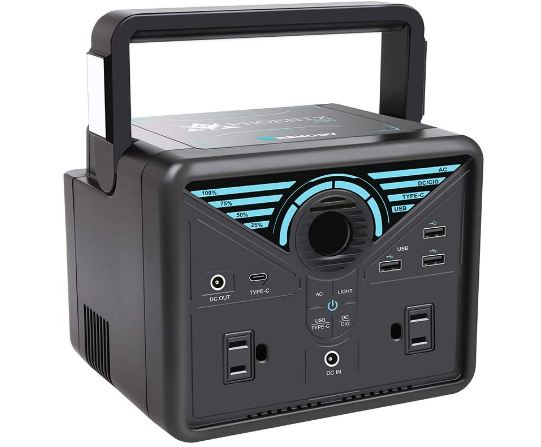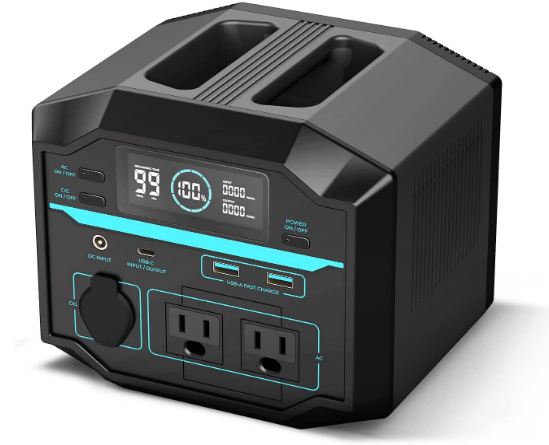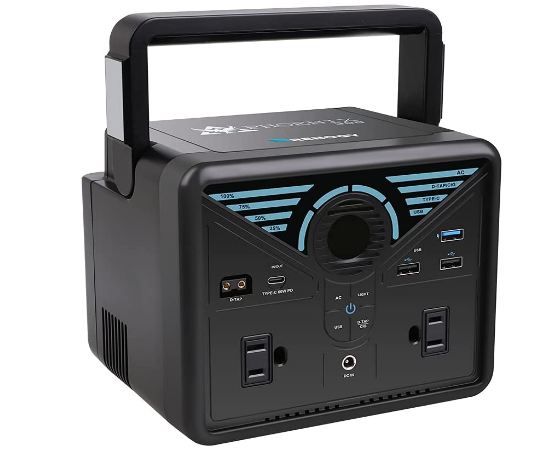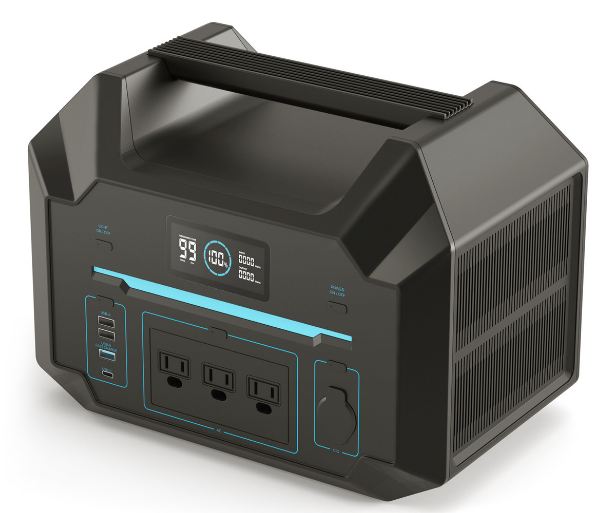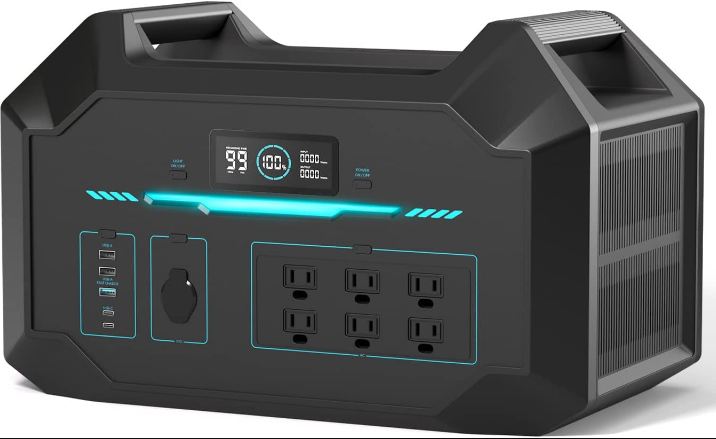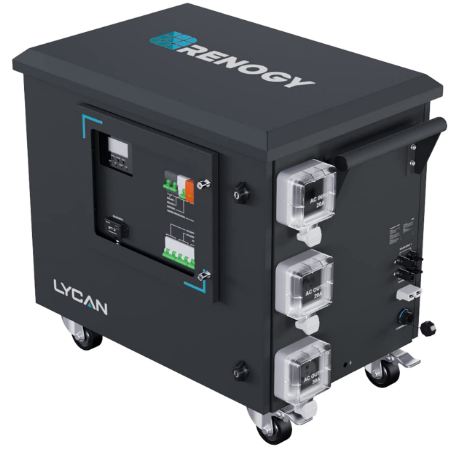Renogy makes all kinds of solar products including solar panels, deep cycle batteries and accessories such as cables, charge controllers and inverters.
They also sell a number of portable solar generators and solar kits. In this guide, we focus only on their solar generators.
Renogy’s solar generators range from small ultra-portable power stations to a massive 4800Wh power station for home backup.
Read on for a quick overview of each solar generator and to see how they compare. Hopefully, this guide will help you pick the right one for your needs.
Who Is Renogy?
If this is the first you are hearing about Renogy or don’t know much about them, I have written an article on who they are, where they are based and what they sell.
Here’s the summary: Renogy is an American company that makes and sells various solar products. Their mission is to make affordable solar products that are easy for customers to set up on their own.
Renogy was launched in 2010 by Yi Li.
Renogy solar products are some of the best in the market. They are high quality and designed to last (most of them come with long warranties). Most of them have high ratings and mostly positive reviews on Amazon and other retail websites.
Renogy Solar Generators Compared
Here’s how Renogy solar generators compare.
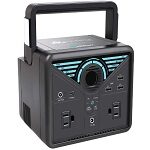
Phoenix 200
189Wh Li-ion battery
150W output
8 outlets:
AC, USB-A, USB-C, DC3 charging options:
AC, solar, carMax solar input:
30W4.6lb
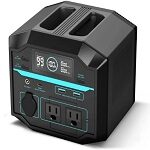
Phoenix 200 G2
222Wh Li-ion battery
200W output
6 outlets:
AC, USB-A, 60W USB-C, DC4 charging options:
AC, USB, solar, carMax solar input:
60W5.3lbs
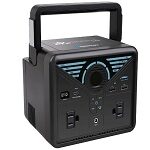
Phoenix 300
337Wh Li-ion battery
200W output
8 outlets:
AC, USB-A, 60W USB-C, DC4 charging options:
AC, USB, solar, carMax solar input:
50W6.4lbs
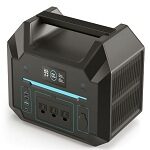
Phoenix 500
495Wh Li-ion battery
800W output
8 outlets:
AC, USB-A, 100W USB-C, DC3 charging options:
AC, solar, carMax solar input:
200W16.7lbs
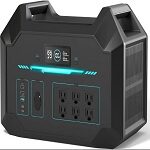
Phoenix 1000
998.4Wh LiFePO4 battery
1500W output
12 outlets:
AC, USB-A, 100W USB-C, DC3 charging options:
AC, solar, carMax solar input:
400W41lbs

Lycan 5000
4800Wh LiFePO4 batteries
3500W output
2 outlets:
AC2 charging options:
AC, solarMax solar input:
4400W264.6lbs
The Phoenix 200 is the smallest solar generator that Renogy currently sells. It has a capacity of 189Wh and puts out 150W of continuous AC power (200W surge).
The Renogy Phoenix 200 is a good pick if you are shopping for a lightweight and highly portable solar generator. Weighing just 4.6lbs, it’s perfect for camping, fishing, picnics and other outdoor activities.
The Phoenix 200 can only power small appliances like a CPAP machine, car fridge, a small TV or a fan. That’s another reason it’s suitable mostly for camping and outdoor adventures.
You can also use it to keep your devices and gadgets charged when you are outdoors or at home during a blackout.
The Phoenix 200 has 8 outlets. These include two AC outlets, three 5V/2.4A USB-A ports, a 5V/3A USB-C port, a 12V/10A cigarette lighter port, and a 12V/5A DC port.
You also get two 1.6W flashlights with multiple modes including SOS.
As for recharging the Phoenix 200, you can do that using a wall outlet, a solar panel or your car’s 12V/24V output. A wall charger and car charger are provided in the package; only the solar panel is not included.
The Phoenix 200 only accepts up to 30W of input power, so a small solar panel like the Renogy E.Flex 21 portable solar panel will be enough to charge it. But expect the power station to take several hours to recharge.The Phoenix 200 G2 is the upgraded version of the original Phoenix 200. The 200 G2 comes with several improvements.
For one, it has a higher capacity of 222Wh, so you can expect a longer runtime for your small appliances. Power output is also higher at 200W, so you can power a wider range of appliances.
The Phoenix 200 G2 also comes with better output and input options.
There are two 200W (400W surge) AC outlets, a 11-17V/10A cigarette lighter port capable of producing up to 120W, two 18W fast charge USB-A ports and a more powerful 60W USB-C PD port.
The USB-C port is actually an input as well as an output. It’s one of the ways you can recharge the Phoenix 200 G2.
You can also plug the 200 G2 into a wall outlet or connect it to a solar panel. The DC input port accepts up to 60W of power, double that of the original Phoenix 200. This significantly reduces charging time.
For even faster charging, the Phoenix 200 G2 has dual charging, which allows you to charge with the AC charger and the USB-C port at the same time. This puts in a combined 120W of power, which fully recharges the power station in about two hours.
When you are on the move, you can also charge the 200 G2 using the included car charger.
Because of the bigger battery, the Phoenix 200 G2 is slightly heavier than the original Phoenix 200. It weighs 5.3lbs. But that’s still pretty light, so the G2 is still a great choice for camping and outdoors activities like drone flying, photography and fieldwork.
If the two Renogy Phoenix 200 power stations are not quite big enough for your needs, consider the Renogy Phoenix 300.
It provides more capacity while staying lightweight and highly portable.
The Phoenix 300 has a 337Wh Li-ion battery, plenty enough to keep small appliances running for a few hours. It can also recharge devices and gadgets many more times.
The larger battery adds only one pound to the power station’s weight compared to the 200 G2. So you still have a solar generator that’s easy to carry around and travel with.
The built-in pure sine wave inverter produces up to 200W of continuous power (350W surge), same as the 200 G2. It’s ideal for powering small appliances and electronics.
The Phoenix 300 has 8 outlets. These include two AC outlets, a fast charging 18W USB-A port, two regular USB-A ports, an in/out 60W USB-C PD port, a D-TAP DC port, and a 12V cigarette lighter port.
There are two input ports. The first is the 60W USB-C port that serves as both an input and output.
The other is a DC in port where you plug in the included solar charger, car charger or AC charger. This input accepts up to 50W of power, slightly less than the Phoenix 200 G2.
So expect the Phoenix 300 to take longer to charge (about 8 hours).
Unlike the 200 G2, the Phoenix 300 doesn't have dual charging. You can only use one input port at a time.
If you need to power bigger appliances like a large TV, a kitchen refrigerator or a chest freezer, get the Renogy Phoenix 500.
It has a capacity of 495Wh, and produces up to 800W of continuous power (1600W surge). That’s a lot of power for a power station of this size. Most ∼500Wh solar generators produce 300-500W of power.
The 800W output allows the Phoenix 500 to power larger appliances. It can also run multiple appliances at the same time without tripping the inverter.
The extra power and capacity also makes the Phoenix 500 more versatile. You can use it outdoors, and it’s also suitable as a home backup power station. In an emergency, you can keep a couple of essential appliances like the fridge and TV running while also keeping lights on and devices charged.
The Phoenix 500 has a cool feature called iStack that increases capacity and output. You’ll need a second Phoenix 500 and a single phase parallel kit.
The kit allows you to connect the two power stations, which doubles capacity to 990Wh and output to 1440W. That’s enough power to run most household appliances.
With a bigger inverter and battery comes more weight. The Phoenix 500 weighs 16.7lbs, which is quite a bit more than its smaller siblings.
The Phoenix 500 is still portable enough for outdoor trips and activities, but it’ll be a bit more work to carry by hand. I recommend it mostly for car/truck campers, overlanders, and RV owners.
The Phoenix 500 has 8 outlets including three AC ports, a more powerful 100W USB-C port, a fast charging 18W USB-A port, two regular USB-A ports, and a 12V 136W cigarette lighter port.
As for the inlets, there are two of them. There’s an AC input port where you plug in the included charger.
The charger puts in 495W of power, which charges the Phoenix 500 to 80% in just an hour. Renogy calls it iTurbo.
The other port is for solar and car charging. It allows up to 200W of power in. So the Phoenix 500 also charges pretty fast via solar. On a sunny day, a 200W solar panel will fully recharge it in 4-5 hours.
The Renogy Phoenix 1000 is currently the largest portable solar generator in their lineup. There’s a larger solar generator - the Lycan 5000 - but it’s not really portable.
The Phoenix 1000 is a good pick if you want a portable power station capable of powering most appliances.
It has a capacity of 998.4Wh and produces up to 1500W of continuous power (3000W surge). That’s enough power to run most household appliances in the US.
The Phoenix 1000 is great for truck camping, RVs, boats, camper vans and you can even use it at home for backup power.
It’s a bit heavy at 41lbs. It’s even heavier than other ∼1000Wh solar generators like the Jackery Explorer 1000 (22lbs).
The added weight is because of two things.
For one, the Phoenix 1000 has a bigger battery and inverter than the smaller Phoenix models. Secondly, it uses a lithium iron phosphate battery (LiFePO4) instead of the usual li-ion battery used in other power stations.
LiFePO4 batteries have a lower energy density, meaning they have to be bigger and heavier to pack the same amount of power as a li-ion battery.
On the upside, LiFePO4 batteries last much longer. While the li-ion batteries in other Phoenix power stations last 500 cycles to 80% capacity, the Phoenix 1000 lasts 2000 cycles to 80% capacity.
Now let’s look at the input and output options in the Phoenix 1000.
It has 12 outlets including six AC outlets (great for running multiple appliances at the same time), two 100W USB-C ports, an 18W fast charge USB-A port, two regular USB-A ports, and a 12V 136W cigarette lighter port.
As for input options there’s AC and DC input ports.
The included AC charger puts in up to 998W through the AC charging port. That charges the Phoenix 1000 in just 1.8 hours (1hr from 0 to 80%).
The DC input accepts up to 400W of solar power (10-100V), which allows fast solar charging. This is the same port where you plug in the car charger.
iStack Technology
The Phoenix 1000 has the same iStack feature as the Phoenix 500. You can link two Phoenix 1000 power stations using a single-phase parallel kit to double capacity to 1997Wh and output to 2700W.
This option is great if you want to expand the Phoenix 1000 without spending a lot of money on a large power station.
Remote App Control
The Phoenix 1000 comes with a built-in bluetooth module that lets you link your phone to the power station.
You can then monitor and control it via the DC Home app.
The Lycan 5000 Power Box is unlike any other power station Renogy makes. Instead of a neat and compact box, the Lycan 5000 is a massive and rugged unit. It consists of various Renogy solar products - LiFePO4 batteries, inverter charger, breakers etc. - wired inside the box.
Unlike most solar generators, you can open the box and access these components. This is great because you can replace individual parts when they break or wear out.
The Renogy Lycan 5000 is heavy, very heavy. It weighs 264.6lbs.
It is designed to provide off-grid or backup power. You set it up in one place and leave it there. It’s wheeled, so you can still move it around your home.
Let’s look at the numbers.
The Lycan 5000 comes with two Renogy 50Ah 48V batteries that provide a combined capacity of 4.8kWh or 4800Wh. That’s enough capacity to run a small off-grid home or provide backup power for days.
And if you need more capacity, you can add up to 6 extra LiFePO4 batteries for a total capacity of 19.2kWh.
The inverter puts out 3500W of continuous AC power (7000W surge). You can run multiple large appliances off the Lycan 5000.
There are three ways to set up and use the Lycan 5000 Power Box.
One, you can plug appliances directly into it. It has just two AC outlets, a 20A outlet and a 30A outlet. If you have more than two appliances, Renogy says you can use heavy duty power strips.
The second more permanent option is to wire the Lycan 5000 directly to select circuits in your home grid. This is great for off-grid power.
You’ll need a breaker panel to connect these circuits to the Lycan 5000.
The third option is connecting the Lycan 5000 to select circuits in your home through a manual or automatic transfer switch.
This option is the best one if you want to use the Lycan 5000 for backup power. Once the main power goes out, the Lycan 5000 powers the circuits connected to it.
Fast Charging
Despite its massive size, the Renogy Lycan 5000 charges really fast. The included AC charger recharges the large battery pack in just 3 hours.
Maximum solar input is a whopping 4400W, which charges the Lycan 5000 in 2.5 hours.
That’s not all; the Lycan 5000 has dual AC + solar charging that puts in 6500W of power to charge the batteries in just 1.3 hours.
This fast charging capability will be especially handy if you plan to expand your system. Even when you add more batteries, you can still expect fairly quick charging.
Which Renogy Solar Generator Is Best For You?
Choose the Renogy Phoenix 200, 200 G2, or 300 if you want a lightweight solar generator for outdoor adventures like camping and fishing.
These compact power stations are also the best if you often drive to various places for photography, drone flying, and other jobs that require you to carry various gadgets and devices.
Of the three, my favorite is the Phoenix 200 G2. It has decent capacity, lots of power for its size, and some cool features including an in/out 60W USB-C port.
Choose the Renogy Phoenix 500 if you want a more capable solar generator that’s easy to carry around. It can power a wider range of appliances and it’s not too heavy. I also love the powerful 100W USB-C port.
Choose the Renogy Phoenix 1000 if you want a relatively compact solar generator that can power larger appliances.
It’s a great pick for truck campers who travel with multiple appliances, RV and boat owners, and overlanders. You can also use it to back up essential appliances at home.
The Phoenix 1000 is also a good pick if you want a long lasting LiFePO4 solar generator.
Choose the Renogy Lycan 5000 if you want a high-capacity and high-output power station for home backup or off-grid power.
It’s especially ideal for those who want an expandable solar generator that they can easily integrate into their home grid.
Renogy Solar Generators FAQs
Do Renogy solar generators have a warranty?
All Renogy solar generators have a 1-year warranty except the Lycan 5000 which has a 3-year warranty.
Can a Renogy solar generator power my home?
Most Renogy solar generators are too small to power your home. They are meant to run low to medium consumption appliances.
Their largest power station - the Lycan 5000 - is a lot more powerful. But it still cannot run the average home since it’s limited to an output of 3500W.
But it can run part of your home. You can select which circuits you want to power or back up.
Can a Renogy solar generator power a refrigerator?
Most Renogy solar generators can easily power a refrigerator. The smaller models, the Phoenix 200, 200 G2 and 300, are more suitable for powering a car fridge or mini fridge.
The larger models - the Phoenix 500 and 1000, and the Lycan 5000 - can power a full size refrigerator.
What kind of batteries does Renogy use in their solar generators?
All but two Renogy solar generators have lithium-ion batteries. The two exceptions are the Phoenix 1000 and the Lycan 5000, which have heavier but longer lasting lithium iron phosphate batteries.


